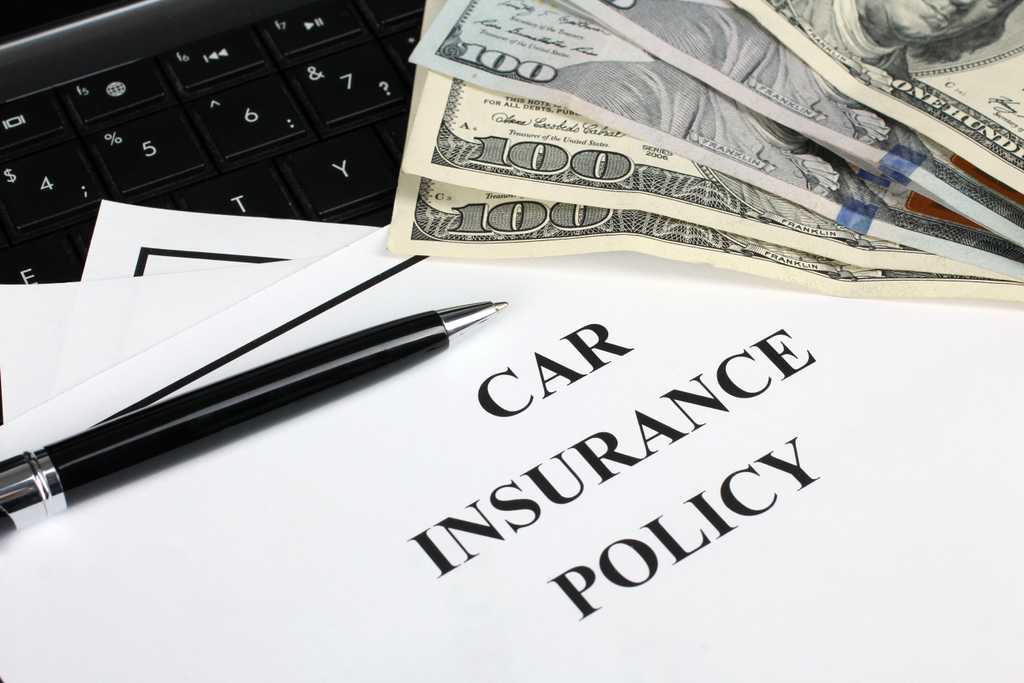Car insurance is legally required in almost every state. It doesn't matter how often you drive, how far you drive, or what type of vehicle you own. Even if your car sits in the garage most days, you are still required to carry car insurance if your vehicle has an active registration or even a car title.
When you purchase a car insurance policy, you’ll need to decide how much coverage to get. Each state has a minimum insurance requirement, which you must adhere to. However, the amount and type of coverage you need is a personal preference based on your budget and how much protection you want.
There are two types of car insurance policies available—minimum coverage and full coverage. A minimum coverage policy includes liability insurance only. A full coverage policy includes liability coverage, plus collision and comprehensive insurance that protect your vehicle.
A minimum coverage policy is usually required by law, and is the cheapest option. But many drivers choose to upgrade to a full coverage policy for more protection. Keep reading to learn how you can decide how much car insurance you need, and which policies might be right for you.
Calculating your car insurance coverage needs
Car insurance is personalized, and every driver has different insurance needs. Some drivers needed the highest amount of coverage available, while others need a lower level of coverage. To determine how much car insurance coverage you need, here are some factors to consider:
- Insurance requirements in your state: Unless you live in New Hampshire or Virginia, the only two states that don’t require traditional car insurance, you’ll need to find out how much coverage is required in your state. You must purchase a car insurance policy that meets the minimum coverage laws, although it’s recommended that most drivers purchase more coverage than what is required.
- The value of your vehicle: The value of your vehicle will help you determine how much insurance is right for you. Get a rate quote and look at the cost of collision and comprehensive insurance, then compare the cost to the value of your vehicle. If the cost of insurance is more than your car’s value (minus the deductible), a minimum coverage policy will suffice. In the event of a total loss, it would be cheaper to buy a new car than it would be to file a collision or comprehensive claim.
- Your personal assets at risk: A good way to determine how much liability coverage you need is to consider your personal assets that would be at risk if you were sued. Make sure you buy enough personal liability coverage to protect the full value of your net worth, which includes everything from your income, to your investments, to your retirement accounts. That way, your assets are covered if you cause an accident and get sued by another driver.
Required car insurance coverage
As mentioned, car insurance is legally required in almost every state, with the exception of New Hampshire and Virginia. Most states require drivers to carry personal liability coverage, plus a few additional policies. Here are the car insurance coverages your state might require:
Personal liability coverage
Personal liability coverage consists of two parts—bodily injury coverage and property damage coverage. Bodily injury coverage will pay for another driver’s medical bills if you cause an accident. Property damage coverage pays for any damage you do to someone else's property, like their vehicle or a storefront.
Medical payments coverage
Medical payments coverage, sometimes referred to as MedPay, is required in some states. It pays for your and your passenger’s injuries in the event of an accident, regardless of which driver caused the crash. Medical payments coverage will also cover lost wages if your injuries keep you from working.
Uninsured/underinsured motorist coverage
Although car insurance is legally required, some people choose to drive without insurance. To reduce the risk of accidents with uninsured drivers, uninsured/underinsured motorist coverage is required in some states. It pays for your and your passenger’s injuries if you get hit by a driver who doesn’t have insurance, or doesn’t have enough insurance to pay for your losses.
Optional car insurance coverage
Most car insurance companies sell optional insurance policies that you can purchase for an added fee. These coverages fill gaps in your standard insurance policy, and provide additional protection. Here are some of the most common optional car insurance coverages:
Collision coverage
Collision coverage is an optional policy that pays to repair your vehicle after a covered accident. It also covers damage that results from accidents with stationary objects, like a fence, mailbox, or building. Drivers who lease or finance their vehicle are often required to carry collision coverage until their loan is paid off.
Comprehensive coverage
Comprehensive coverage pays to repair your vehicle if it gets damaged from a non-collision incident. Common examples include falling objects, theft, vandalism, flooding, fire, and hailstorms. Like collision insurance, comprehensive coverage is typically required for drivers who lease or finance their vehicle.
Roadside assistance
Roadside assistance is an endorsement that is offered by most car insurance companies. If your car breaks down or won’t start up, roadside assistance will cover the cost of towing (within a certain distance), battery replacement, fuel delivery, locksmith services and extrication.
Accident forgiveness
Accident forgiveness can be a beneficial policy for drivers with a clean record. It prevents your insurance premium from increasing after a first accident. Keep in mind that some insurance companies have restrictions on accident forgiveness. For instance, some carriers will only waive minor crashes under a certain dollar amount.
Car insurance requirements by state
Every state requires a different amount of car insurance. You must carry at least the minimum amount of insurance in order to legally operate your vehicle. States abbreviate their insurance requirement in the following format:
Bodily injury coverage per person / bodily injury coverage per accident / property damage coverage per accident
For example, in Arizona, drivers are required to carry $15,000 in bodily injury coverage per person, $30,000 in bodily injury coverage per accident, and $10,000 in property damage coverage per accident. The table below includes the car insurance requirements in every state:
| State | Minimum liability coverage limits * |
|---|---|
Alabama | 25/50/25 |
Alaska | 50/100/25 |
Arizona | 15/30/10 |
Arkansas | 25/50/25 |
California | 15/30/5 |
Colorado | 25/50/15 |
Connecticut | 25/50/20 |
Delaware | 25/50/10 |
Florida | 10/20/10 |
Georgia | 25/50/25 |
Hawaii | 20/40/10 |
Idaho | 25/50/15 |
Illinois | 25/50/20 |
Indiana | 25/50/25 |
Iowa | 20/40/15 |
Kansas | 25/50/25 |
Kentucky | 25/50/25 |
Louisiana | 15/30/25 |
Maine | 50/100/25 |
Maryland | 30/60/15 |
Massachusetts | 20/40/5 |
Michigan | 20/40/10 |
Minnesota | 30/60/10 |
Mississippi | 25/50/25 |
Missouri | 25/50/25 |
Montana | 25/50/20 |
Nebraska | 25/50/25 |
Nevada | 25/50/20 |
New Hampshire | 25/50/25 |
New Jersey | 15/30/5 |
New Mexico | 25/50/10 |
New York | 25/50/10 |
North Carolina | 30/60/25 |
North Dakota | 25/50/25 |
Ohio | 25/50/25 |
Oklahoma | 25/50/25 |
Oregon | 25/50/20 |
Pennsylvania | 15/30/5 |
Rhode Island | 25/50/25 |
South Carolina | 25/50/25 |
South Dakota | 25/50/25 |
Tennessee | 25/50/15 |
Texas | 30/60/25 |
Utah | 25/65/15 |
Vermont | 25/50/10 |
Virginia | 25/50/20 |
Washington | 25/50/10 |
West Virginia | 25/50/25 |
Wisconsin | 25/50/10 |
Wyoming | 25/50/20 |
*The first two numbers refer to bodily injury liability limits and the third number to property damage liability. For example, 15/30/10 means coverage up to $30,000 for all persons injured in an accident, subject to a limit of $15,000 for one individual, and $10,000 coverage for property damage.
No-fault car insurance
When shopping for car insurance, it’s important to figure out if you live in a no-fault state. In a no-fault state, drivers are required to file a claim with their insurance company after an accident, regardless of which driver caused the crash. According to the Insurance Information Institute (III), there are twelve states that have no-fault car insurance laws. Those states include:
| State | Minimum PIP coverage limit |
|---|---|
Florida | $10,000 |
Michigan | $50,000 |
New Jersey (optional) | $15,000 |
New York | $50,000 |
Pennsylvania (optional) | $5,000 |
Hawaii | $10,000 |
Kansas | $4,500 |
Kentucky (optional) | $10,000 |
Massachusetts | $8,000 |
Minnesota | $40,000 |
North Dakota | $30,000 |
If you live in a no-fault state, you are required to carry a special type of insurance, called Personal Injury Protection (PIP). PIP will automatically cover your medical bills and lost wages after an accident, whether you were responsible for the crash or not. In New Jersey, Pennsylvania, and Kentucky, drivers have the option to opt-out of no-fault insurance, and purchase a standard liability insurance policy instead.
The dangers of driving uninsured
Driving without car insurance is illegal, and getting caught without insurance comes with steep consequences. The specific punishments vary by state, but you should expect to get hit with a hefty fine and temporarily lose your driving privileges. Your car may also be impounded. For a second or third offense, you could face more significant fines and even jail time.
Drivers who get caught without insurance are often required to purchase SR-22 insurance. SR-22 insurance isn’t actually a type of insurance, but rather a certificate that proves you meet the state’s minimum insurance requirements. An SR-22 will stay on your record for three to five years from the date of the offense.
Another thing to consider is that driving without car insurance will have a big impact on your car insurance rate in the future. Driving uninsured is taken very seriously, and the offense will be recorded on your driving record. When you go to purchase a new insurance policy, you will have to pay a much higher rate than the average driver.
Summary
Car insurance is legally required in almost every state. Drivers must carry a minimum amount of insurance coverage in order to legally get behind the wheel. Before you purchase car insurance, figure out how much coverage you need. Start by identifying your state’s insurance laws, and determine if you live in a no-fault state. Then, use the value of your vehicle to determine what type of coverage you need, and consider your personal assets to set your liability limit.



